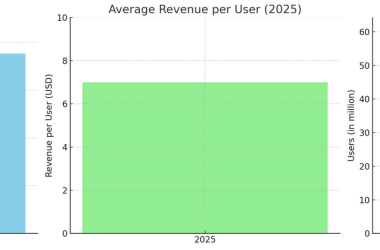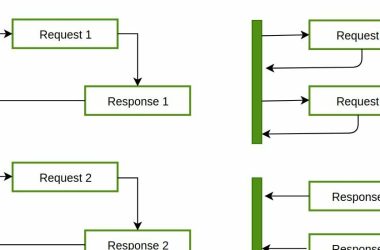Serverless computing is a new and exciting way of doing software engineering. It changes how we make, put out, and take care of applications.
This approach is a big shift from how things were done before, making the process more efficient, scalable, and cost-friendly.
In this article, we look into serverless cloud computing, talking about its main benefits, how it affects the usual ways of doing software development, giving real examples, and looking at what might come next.
Introduction to Serverless Cloud Computing
Serverless computing, also known as Function as a Service (FaaS), is a way of using cloud computing where developers can create and run applications without dealing with the technical details of the servers.
In this setup, the cloud provider handles all the server stuff, so developers can just concentrate on writing code in the form of functions.
These functions get triggered when certain events happen, like when a user makes a request or when there are changes in data.
Key Advantages and Features of Serverless Technology
Serverless technology has a bunch of good things that make it a great option for making modern applications. Let’s check out some of these important points:
Scalability
Serverless architectures can easily handle changes in the number of requests without needing manual adjustments. When there’s a lot of demand, it creates more instances of functions to handle the extra load.
This keeps things running smoothly without needing people to step in, making it great for apps with different levels of activity.
Cost Efficiency
Serverless computing stands out for being cost-effective. In traditional setups, resources are assigned for expected peak usage, which can lead to wasted capacity and higher expenses.
But with serverless technology, you only pay for the computing power you actually use when functions run.
Simplified Deployment
Deploying serverless apps is simpler than doing it with traditional server-based ones. Developers don’t have to deal with servers, networks, or infrastructure stuff. The cloud provider handles all that, so developers can just concentrate on writing code.
Reduced Operational Complexity
In serverless setups, the cloud provider takes care of tasks like server maintenance, patching, and capacity planning. This makes life easier for development teams, as they don’t have to deal with these operational chores.
Developers can focus on adding features and improving functionality without getting stuck in the details of managing infrastructure.
Impact on Traditional Engineering Practices
As we stated above, the use of serverless computing is shaking up how software is created, put out, and looked after. Let’s take a look at some important changes it brings to the traditional engineering practices:
Decoupling of Services
Serverless setups promote breaking down services into separate, loosely connected pieces. Each function does a specific job, and they can talk to each other through clear interfaces.
This microservices way of doing things makes things more flexible, easier to keep up and allows updating or scaling different parts without messing with the rest.
Event-Driven Development
In serverless computing, things happen in response to events or changes in the system. This follows a reactive way of programming, fitting well with the dynamic nature of modern apps.
Developers can set up applications to react to events, creating a more flexible and responsive structure.
Focus on Code Quality
Serverless development pushes IT teams to work better and write short, focused functions, making them really care about code quality and efficiency.
Dealing with individual functions also makes testing and fixing code problems simpler, bringing overall improvements to software quality.
Shorter Development Cycles
Serverless computing makes development faster because the deployment process becomes much simpler. Developers can focus on writing code without the need to manage servers or worry about infrastructure.
This approach speeds up the development process, helping teams iterate quickly and get software projects to market faster.
Real-world Examples and Use Cases
Many companies in different fields have adopted serverless computing to be more flexible and save money. Here are some examples:
AWS Lambda
Amazon Web Services (AWS) Lambda is a top serverless platform that lets developers run code without having to set up or handle servers. People use it for different things like dealing with data, processing files in real-time, and managing backend services.
Azure Functions
Azure Functions, developed by Microsoft, a leading IT company, makes it easy for developers to create serverless apps. It works with many programming languages and plays nicely with other Azure services, making it a flexible option for all kinds of applications.
Google Cloud Functions
Google Cloud Functions provides a serverless space to build and link up cloud services. It works well for apps that respond to events, and you can set it off with things like HTTP requests or events in Cloud Storage.
Future Trends in Serverless Computing for Software Engineers
The evolution of serverless computing continues to shape the future of software engineering. Anticipated trends include:
Increased Hybrid Cloud Adoption
Companies are expected to use a mix of cloud solutions that bring together serverless computing and regular infrastructure. This way, they get more flexibility and can use the advantages of both serverless and traditional models based on what they need.
Advancements in Edge Computing
Soon, we’re likely to see more serverless setups at the edge. Edge computing puts computing closer to users, making things faster and improving the user experience. Using serverless functions at the edge can make real-time processing better for things like IoT, AR/VR, and delivering content.
Better Tooling and Monitoring
As more people start using serverless, we’ll see a stronger emphasis on tools and monitoring made just for serverless apps.
Developers can look forward to better tools for finding and fixing problems, keeping an eye on performance, and using analytics to make their serverless functions work even better.
Serverless Security Innovations
With the increasing adoption of serverless computing, there will be a lot more attention on making it secure.
We might see new and better tools and ways to keep serverless setups safe, dealing with things like keeping data private, controlling who can access what, and making sure the code is secure.
Integration of AI and Machine Learning
In the future, we can expect serverless computing to work more closely with emerging technologies like artificial intelligence (AI) and machine learning (ML).
Developers might use serverless functions for things like training models, making predictions, and adding smart features to apps, all without dealing with complicated infrastructure.
Conclusion
In summary, serverless computing is a big deal in the world of software engineering. It’s changing the game with its scalability, cost savings, and easy deployment.
Real examples prove how flexible it is, and looking forward, it seems we’re moving towards a mix of cloud solutions and better tools.
For software engineers, getting on board with serverless computing opens up new opportunities to be creative and efficient in building applications.
Ready to jump into the future of software development with serverless computing? Get in touch with SCAND today for advanced solutions made just for you. Our team of skilled developers is all set to transform your journey in application development.
The post How Serverless Computing is Revolutionizing Software Engineering Practices appeared first on SCAND.







